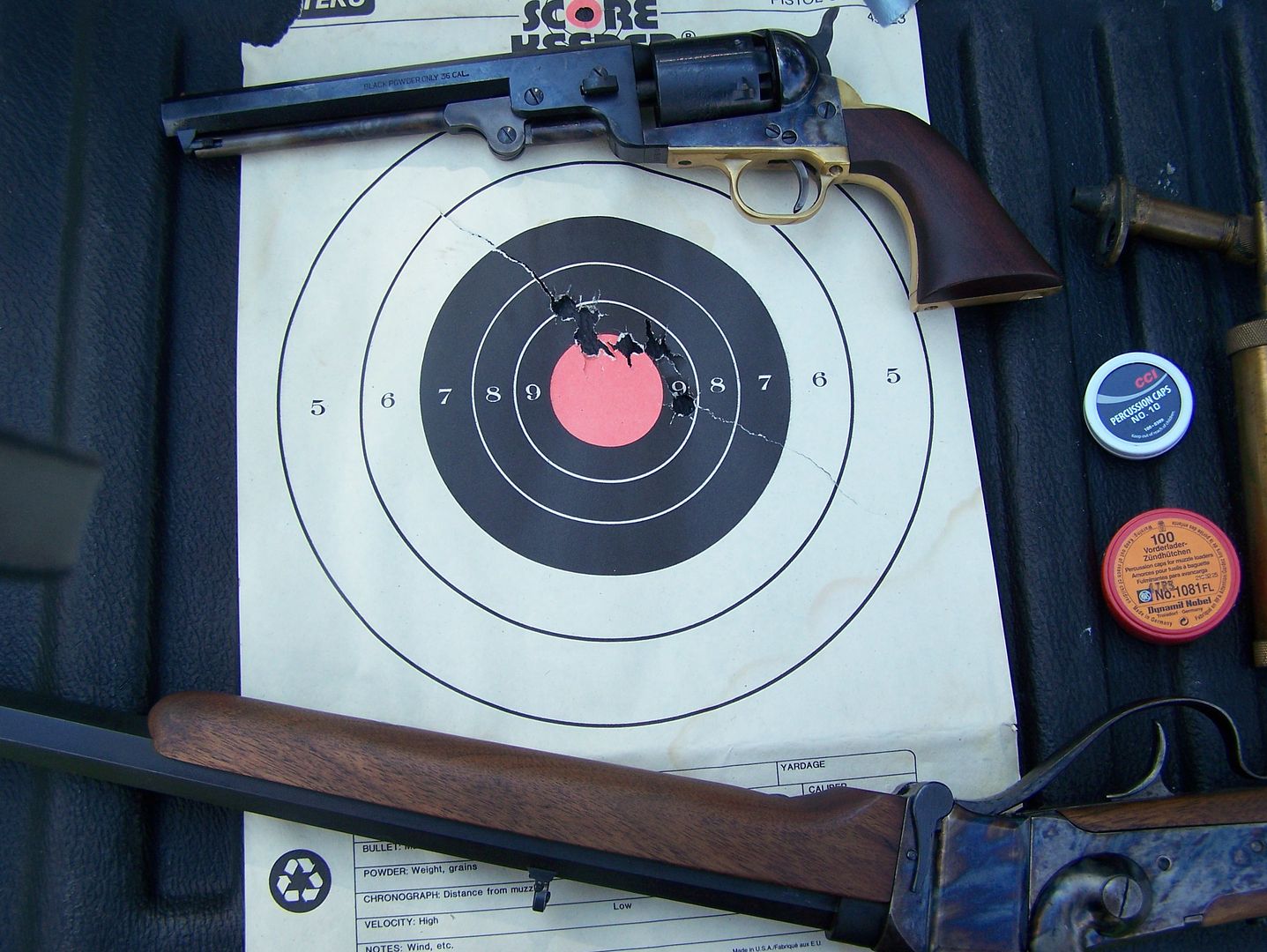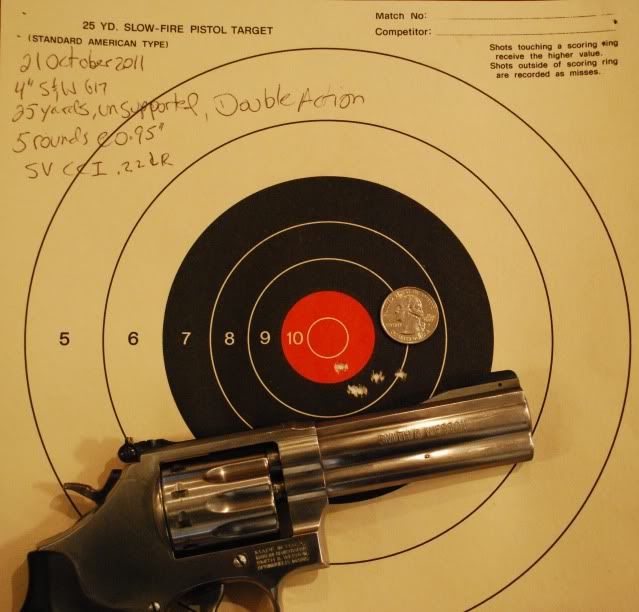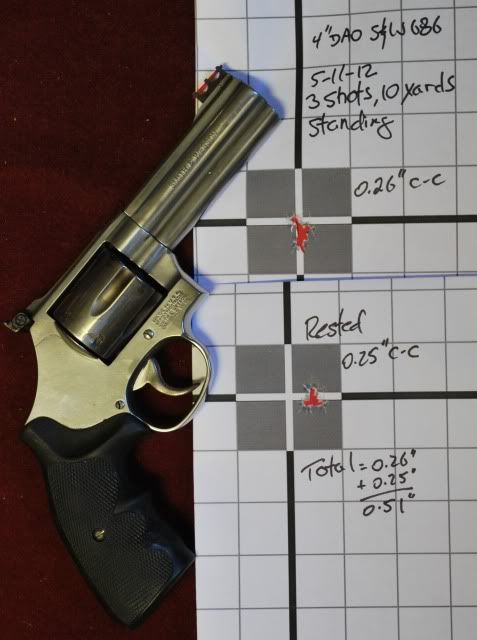I was wondering on people's opinions on what kind of groupings you'd say are average, and what is proficient.
I can group all inside a 6 inch circle at 10 yards, maybe most of them inside at 15 yards on my best day. Shooting 6 inch steel plates at 30 feet I can usually hit them all without missing. But I look at reviews of guns the targets shot freehand and they're always better then mine, by a good margin. However, I am a lot better than most of my coworkers by a good margin, who only shoot a few times a year when not qualifying. Watching Hickok45's videos shooting at the gong, he's deciding where to hold on it, where I'd be lucky to hit it at all at that distance.
I dont consider myself particularly skilled, but am I an average shot? Slightly or significantly above average? What kind of groupings do you guys normally get and consider to be above average?
I can group all inside a 6 inch circle at 10 yards, maybe most of them inside at 15 yards on my best day. Shooting 6 inch steel plates at 30 feet I can usually hit them all without missing. But I look at reviews of guns the targets shot freehand and they're always better then mine, by a good margin. However, I am a lot better than most of my coworkers by a good margin, who only shoot a few times a year when not qualifying. Watching Hickok45's videos shooting at the gong, he's deciding where to hold on it, where I'd be lucky to hit it at all at that distance.
I dont consider myself particularly skilled, but am I an average shot? Slightly or significantly above average? What kind of groupings do you guys normally get and consider to be above average?



